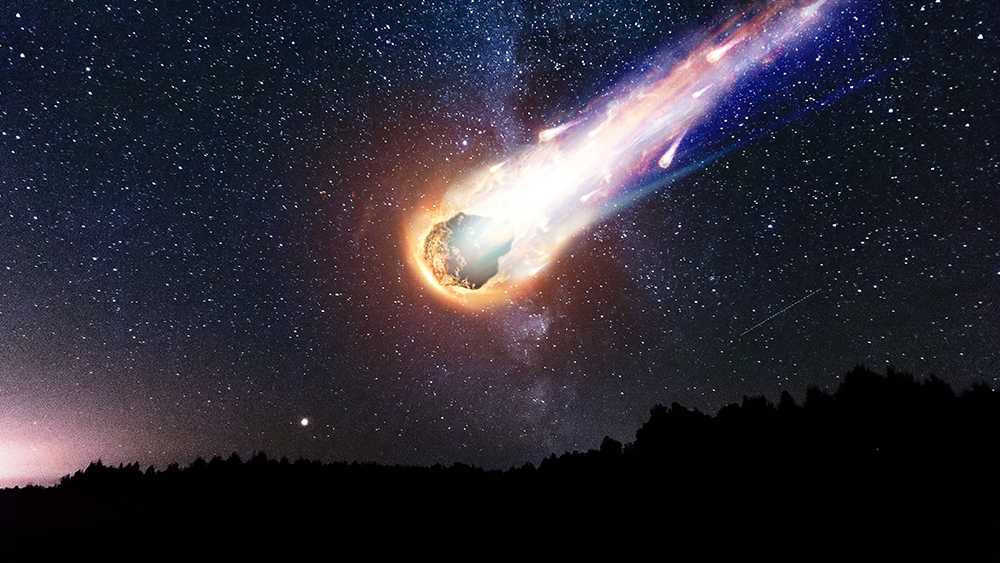Jeffrey Goodman's "The Comets of God" explores connection between the BIBLE and the COSMOS
- Jeffrey Goodman's "The Comets of God" argues that the Bible contains scientific information about comets, suggesting these celestial bodies are divine instruments that have significantly influenced human history.
- Goodman posits that the biblical Flood was caused by a massive comet impact, using the discovery of the Burckle Crater in the Indian Ocean as evidence for a colossal wave event.
- The destruction of Sodom and Gomorrah is reinterpreted as a comet breaking up in the atmosphere, releasing fiery debris and sulfurous compounds, supported by sulfur deposits near their suspected locations.
- Goodman suggests the plagues described in Exodus could be explained by a close encounter with Comet Halley around 1404 BC, causing dust, debris and chemical compounds to rain down on Egypt.
- Goodman interprets the apocalyptic events in Revelation as literal accounts of cometary impacts, suggesting a series of cosmic bombardments leading to the "Day of the Lord" and the "Battle of Armageddon."
In a riveting exploration of some of the most profound and mysterious texts in human history, Jeffrey Goodman's "
The Comets of God" challenges readers to reconsider the interplay between science and scripture. This groundbreaking book delves into the enigmatic connection between the Bible and the cosmos, suggesting that the ancient religious text is not just a repository of divine wisdom but also a trove of scientific knowledge, particularly about comets—the celestial bodies often depicted as harbingers of divine wrath.
At the heart of Goodman's argument is the provocative idea that comets are God's instruments, used to execute His divine plans throughout history. The Bible, he posits, is replete with references to these celestial phenomena, described in vivid and often apocalyptic terms. Goodman argues that if we interpret these passages through a scientific lens, they reveal a wealth of information about natural events that have profoundly shaped human civilization.
Goodman's analysis begins with the story of Noah's Flood, a narrative often dismissed as myth or allegory. He presents compelling evidence that the Flood was not merely the result of rain but was triggered by a massive comet impact. The discovery of the Burckle Crater, located at the bottom of the Indian Ocean, serves as the "smoking gun" for this theory. Goodman suggests that the impact generated waves of unimaginable height, capable of covering the highest mountains and causing the widespread devastation described in the Bible.
Similarly, the destruction of Sodom and Gomorrah, traditionally attributed to divine judgment, is reinterpreted through the lens of comet activity. The biblical description of "fire and brimstone" raining down on these cities is, according to Goodman, a plausible account of a comet breaking up in the atmosphere and releasing fiery debris and sulfurous compounds. He cites the discovery of unusual sulfur deposits near the suspected locations of Sodom and Gomorrah as supporting evidence.
The plagues of Egypt, a series of divine interventions described in the Book of Exodus, are also given a scientific twist in Goodman's interpretation. He suggests that these plagues, such as the Nile turning to blood, the boils and the hail mixed with fire, could be explained by the dust, debris and chemical compounds released during a close encounter between Earth and Comet Halley around 1404 BC. This encounter, within the timeframe of the Exodus, provides a scientifically plausible explanation for the biblical phenomena.
Goodman further explores the "pillar of cloud and fire" that led the Israelites through the desert, suggesting that it was a comet. This interpretation not only aligns with the biblical narrative but also offers a naturalistic explanation for the miracle that guided the Israelites during their exodus from Egypt.
Perhaps the most intriguing aspect of Goodman's work is his analysis of the Book of Revelation, which is replete with apocalyptic imagery. He argues that the catastrophic events described in Revelation, such as the stars falling from the sky, the great earthquake and the disappearance of mountains and islands, are literal accounts of cometary impacts. The "Seven Trumpets" and "Seven Vials" of Revelation are interpreted as descriptions of seven rounds of comet bombardment, each with increasingly devastating effects.
Goodman draws on the work of astronomers who have recognized the astronomical origins of these events, suggesting that the "Day of the Lord" and the "Battle of Armageddon" are rooted in cometary activity. He interprets the "mountain rendezvous of troops" as a gathering of armies in the mountains of Israel, possibly at Mount Hermon, where a massive cometary impact would trigger a volcanic eruption, known as a "nuee ardente," unleashing a devastating cloud of superheated ash and gas. This scenario, Goodman argues, is consistent with the biblical description of the "winepress of the wrath of God," where blood flows as high as the horses' bridles.
Whether you view Goodman's theories as groundbreaking or speculative, "The Comets of God" is a thought-provoking read that challenges readers to explore the intersections of faith, science and the mysteries of the universe. As we delve deeper into the ancient texts and the latest scientific discoveries, we are reminded that the search for truth is an ongoing journey, one that continues to unfold in the intersections of the divine and the cosmic.
Watch this video about Jeffrey Goodman's "The Comets of God."
This video is from the
BrightLearn channel on Brighteon.com.
Sources include:
Brighteon.ai
Brighteon.com
 Parler
Parler Gab
Gab










